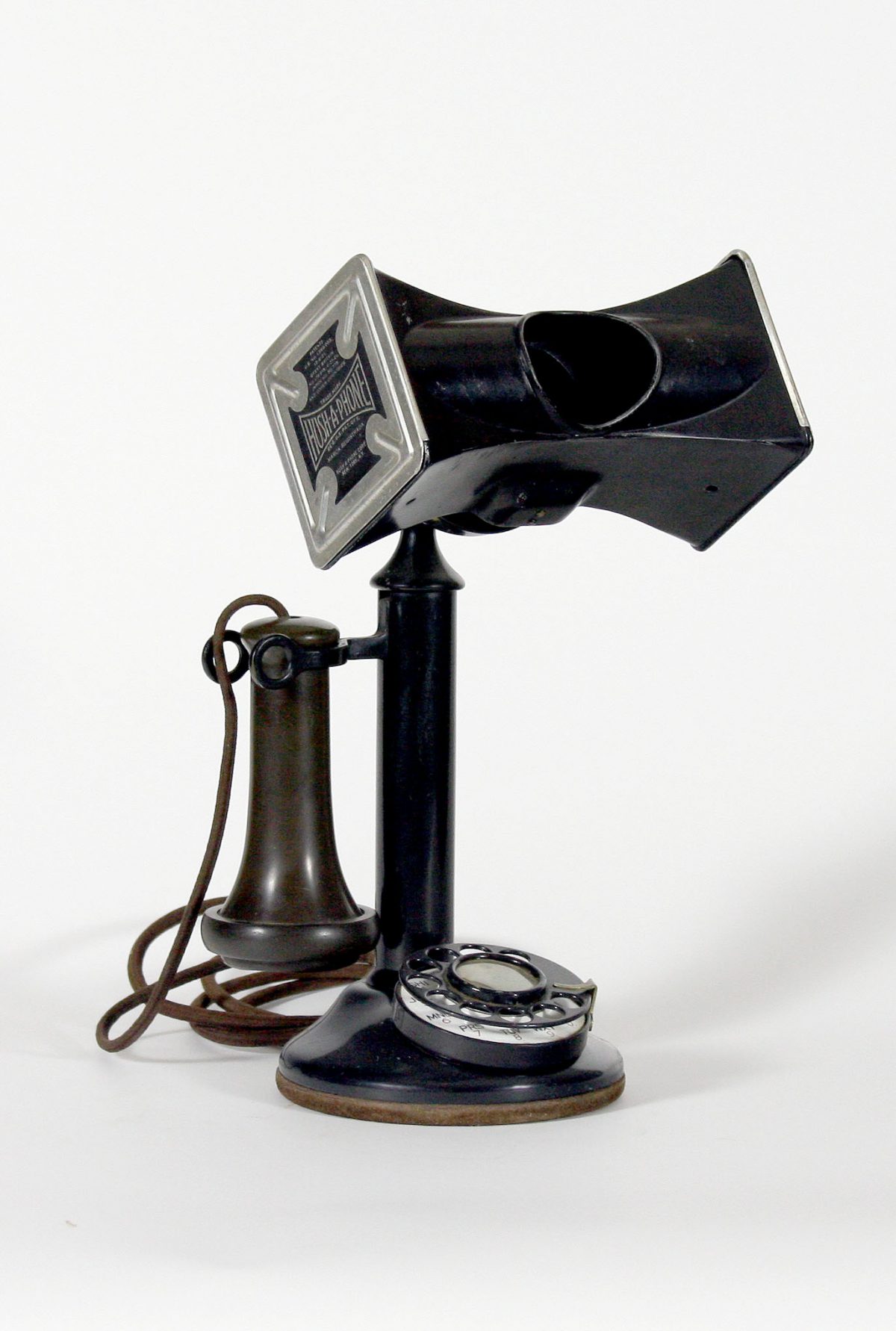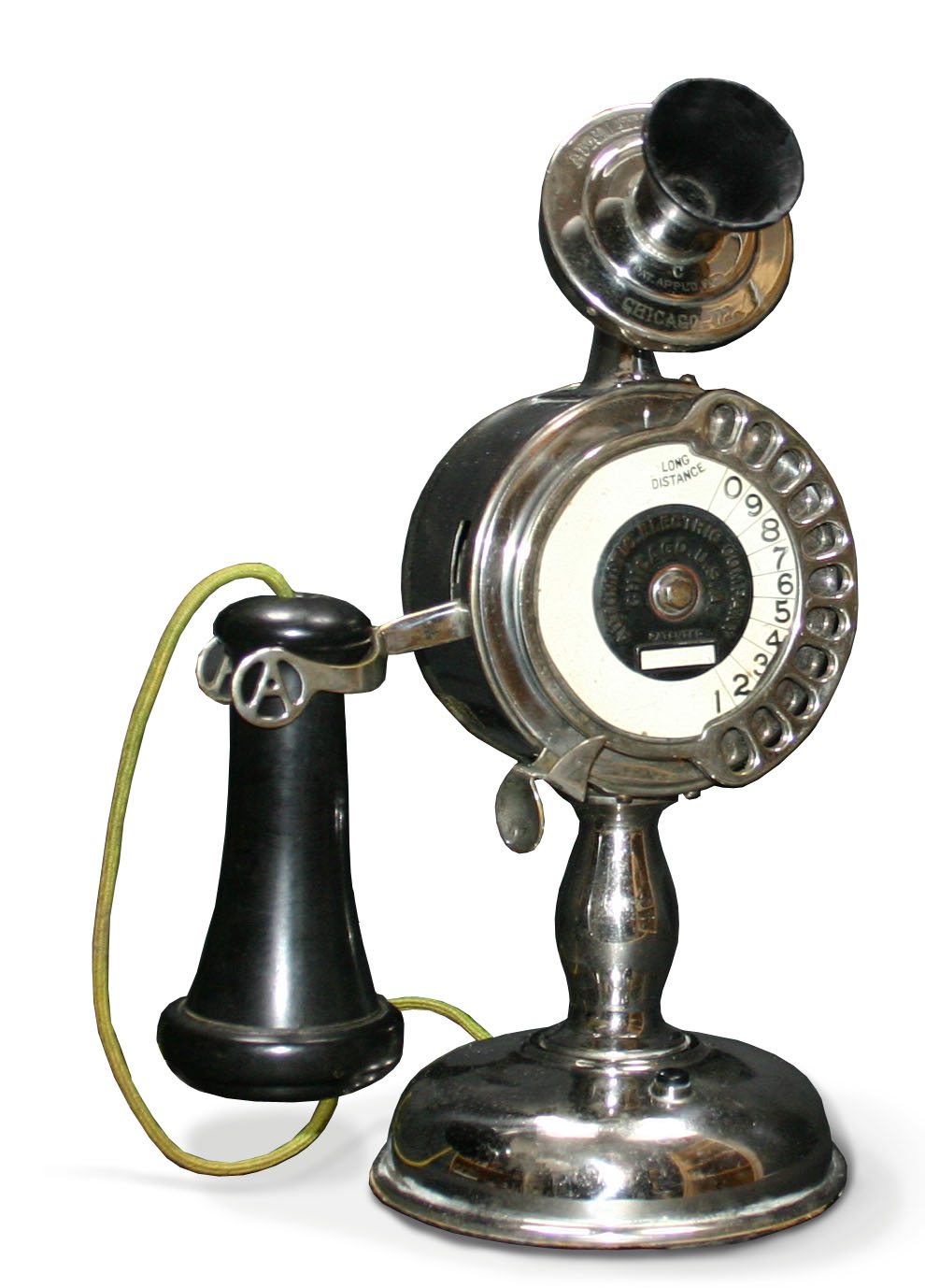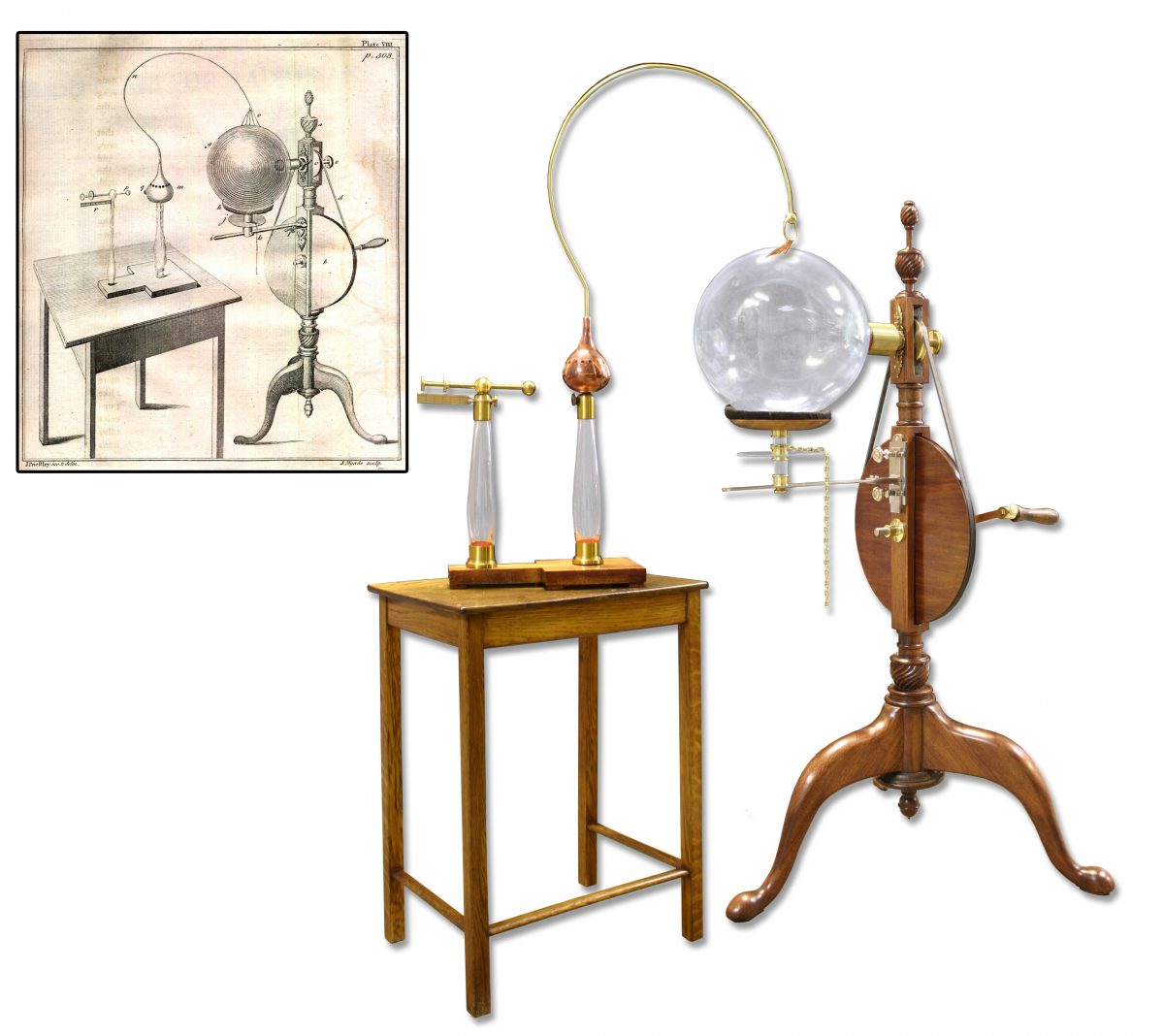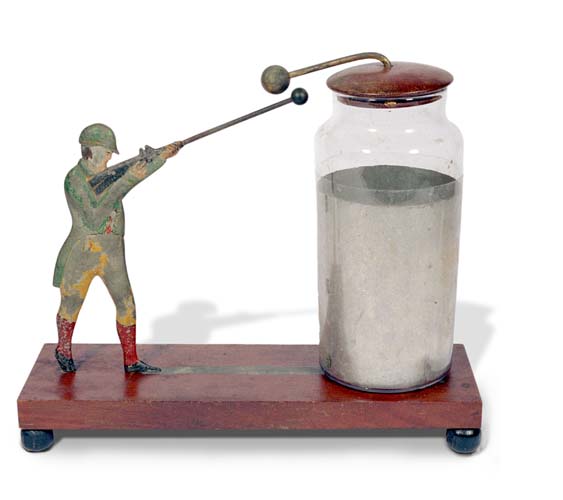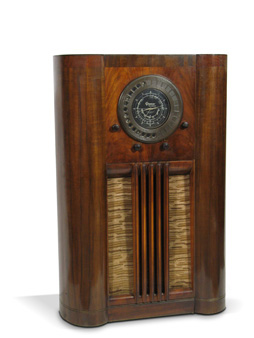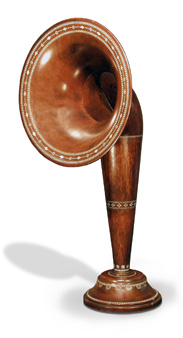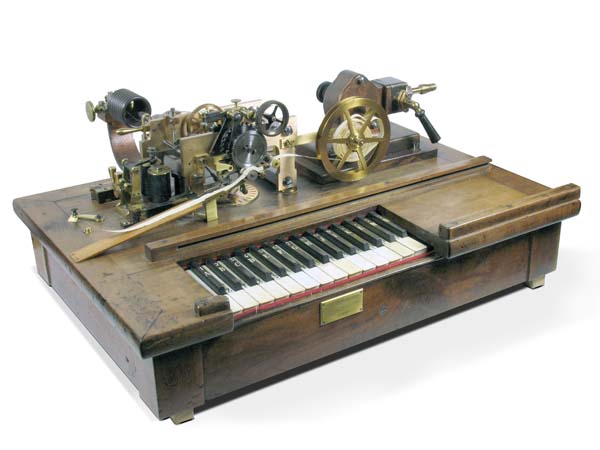This unassuming little device, called a “Hush-A-Phone,” is a small rectangular baffle that fits over the mouthpiece of a candlestick telephone. There is an opening in the front just big enough to place your lips into. When you speak, the party on the other end of the line can hear clearly, but no one in the room with you can …
Strowger Telephone
““girl-less, cuss-less, out-of-order-less, and wait-less.” – Inventor Almon Strowger announcing the first automated telephone exchange. Strowger 11 digit Potbelly Dial Candlestick. This is the first dial telephone. The inventor, Almon Strowger, was an undertaker in Kansas City in the late 1800s. According to legend, the wife of his only competitor worked the switchboard at the local telephone exchange. Whenever a …
Volta Cannon
In the 1770’s, Alessandro Volta became interested in the characteristics of swamp gases. In order to test flammability he invented his cannon, also called a spark Eudiometer. He filled the cannon with methane gas or a mixture of hydrogen and oxygen, placing a cork in the top to keep the gas from escaping. A small spark gap inside was used …
Joseph Priestley Friction Machine
Best known for his discovery of oxygen, Joseph Priestley also experimented with electricity and wrote the first comprehensive history on the subject, published in 1769. The book includes detailed descriptions of several static electricity machines. Since no complete examples of these machine survive today, Museum President John Jenkins constructed a faithful reproduction of one machine, using the illustration and description in Priestley’s …
Electrical Sportsman
By Joseph Wightman Originally three small paper birds were attached by threads to the electrode of the jar. When the jar was charged, the static electricity made the birds seem to fly into the air. When the sportsmen’s rifle touched the jar’s electrode, the jar discharged – the resulting spark sounding something like a small rifle shot – and the …
Grunow Teledial Receiver: ca 1937
Model 1291. Large art deco console radio with famous “Teledial.” This unusual feature allows the user to pick the desired station using a rotary dial similar to a telephone. Known as the “Shirley Temple” radio because of the 1937 ad campaign for the radio, featuring the child star. Twelve tube chassis. Signed “Grunow Radio Company.” American.
David Sarnoff Horn Loudspeaker: ca 1924
In 1924, David Sarnoff, President of RCA, commissioned a group of artisans in Czechoslovakia to construct a pair of horn speakers so beautiful and different that they would attract all buyers in this country. Upon the completion of the prototypes, they were sent to Mr. Sarnoff with a quotation of their cost in quantity. Unfortunately, despite their exceptional beauty and …
Herzian Wave Radiator and Resonator
MICHAEL FARADAY was the first to propose the concept of an electromagnetic field – lines of force which spread out in all directions to fill space, and to affect matter within that space. It was James Clerk Maxwell, however, who built the theoretical bridge from electricity to radio. Intrigued by Faraday’s work, Maxwell developed a set of equations to describe …
Hughes Telegraph
Probably the most technologically impressive of the early telegraphs were the printing telegraphs of Hughes, House, and others. These machines shared one advantage with the ABC telegraph – no codes were used. Instead, the operator at the sending station sat at a keyboard that resembled a piano, right down to the black and white keys. Each key on the “piano” …
Leyden Jars
The Leyden jar originated about 1746 through the work of Dutch physicist Pieter van Musschenbroek of the University of Leyden and Ewald Georg von Kleist of Pomerania, working independently. A Leyden jar consists of a glass jar with an outer and inner metal coating covering the bottom and sides nearly to the neck. A brass rod terminating in an external …
- Page 2 of 2
- 1
- 2
